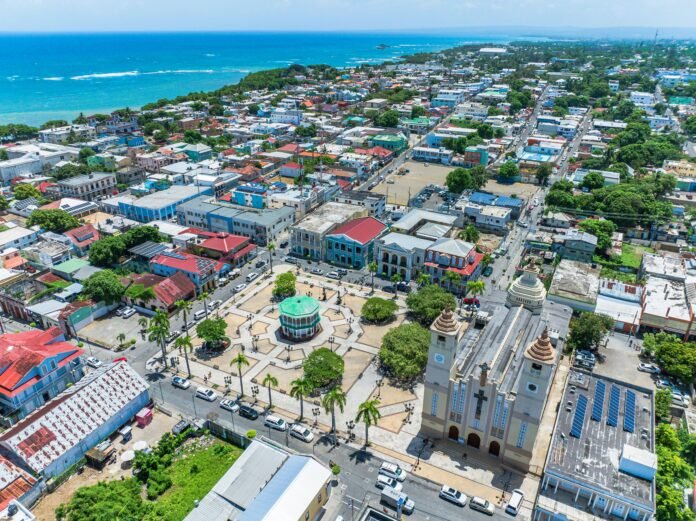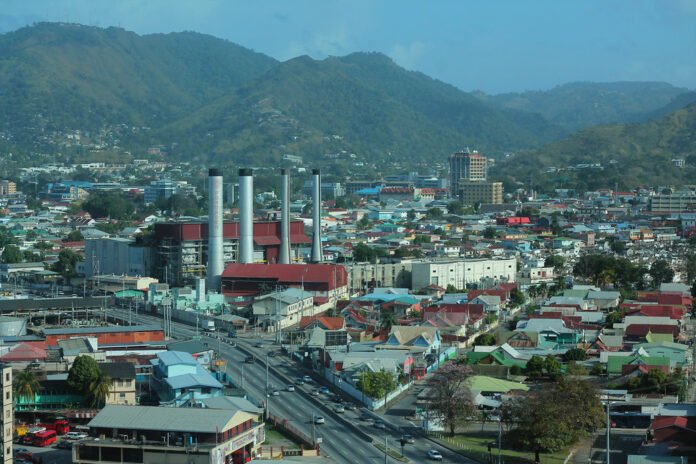The Dominican Republic operates a dual health insurance system that encompasses both public and private coverage. Each sector presents distinct advantages and limitations depending on the population it serves, the quality of services, and the financial protection it provides.
Public Health Insurance: Accessible but Constrained
At the core of the public system is Seguro Nacional de Salud (SENASA), a government-funded initiative that covers over 90% of the population through contributory and subsidized schemes. SENASA is designed to provide a standardized benefits package that includes primary care, emergency services, hospitalization, maternity care, and more. It is supported by employer and employee contributions, with full subsidies offered to vulnerable groups such as the poor, unemployed, and disabled.
While this system promotes universal health coverage, challenges persist. Co-payments, especially for specialized care and medications, remain a burden for many. Moreover, public healthcare facilities under the Ministry of Public Health (MINSA) often face underfunding, equipment shortages, and staffing issues. Patients frequently need to bring their own supplies like bedding and food, and rural areas suffer from limited access to specialists and long wait times.
Despite these drawbacks, the Dominican government is actively working to improve effective coverage, reduce out-of-pocket costs, and strengthen primary healthcare, particularly through initiatives like Seguro Familiar de Salud and increased investment in public health infrastructure.
Private Health Insurance: High-Quality Care at a Premium
On the other side, the private insurance market is robust, offering tailored and often high-quality options. Local private insurers provide basic plans with co-payment models, mostly tied to select clinics. Employer-sponsored plans are common among the working middle class and typically cover private hospitals and specialist services.
For international residents and affluent Dominicans, global insurers like Bupa, Cigna, and Allianz offer comprehensive packages with benefits that include inpatient and outpatient care, dental and mental health services, evacuation, and even organ transplants. These plans ensure access to world-class care, bilingual providers, and reduced wait times—especially in private hospitals located in urban centers and tourist destinations like Santo Domingo and Punta Cana.
However, the affordability of these plans is a key differentiator. Private plans can be expensive, especially those offering international or elite local coverage, making them inaccessible for large segments of the population. Furthermore, U.S. insurance plans are not widely accepted in Dominican facilities, making local or international policies more suitable for expats and tourists.
Similarities and System Interplay
Both systems aim to provide comprehensive care across a range of services—maternity, chronic disease management, emergency care—but differ in quality, efficiency, and patient experience. Importantly, both public and private insurance schemes are part of the broader effort toward universal health coverage by 2025.
Many Dominicans, particularly those with employer-sponsored public insurance, opt to supplement SENASA with private plans for access to quicker, higher-quality treatment. This complementary dynamic reflects the growing complexity of the Dominican healthcare system as it tries to balance equity, affordability, and excellence.
Top 5 Public Health Insurances in the Dominican Republic: Costs, Coverage, Accessibility, and Consumer Satisfaction
The Dominican Republic operates a predominantly public health insurance system aimed at achieving universal health coverage. While the central pillar is Seguro Nacional de Salud (SENASA), there are several other public initiatives and legacy systems that serve various segments of the population. Below is a detailed breakdown of the top public health insurances and healthcare programs in the Dominican Republic.
1. Seguro Nacional de Salud (SENASA) – National Health Insurance(Official website: http://www.arssenasa.gov.do)
- Cost:
- Contributory Plan: Funded through payroll contributions from employers (7.09%) and employees (3.04%)
- Subsidized Plan: Fully funded by the government
- Co-payments: Range from DOP 50–300 for services in some cases
- Contributory Plan: Funded through payroll contributions from employers (7.09%) and employees (3.04%)
- Available Services/Coverage Features:
SENASA offers a comprehensive benefits package that includes:
- Primary and preventive care
- Emergency services
- Maternity and newborn care
- Chronic disease management
- Inpatient and outpatient services
- Selective specialized procedures and medications
- Primary and preventive care
- Open for All or Limited:
- Contributory Plan: Open to formal-sector employees
- Subsidized Plan: Open to unemployed, disabled, poor, and vulnerable populations
- Contributory Plan: Open to formal-sector employees
- Core Financial Features:
Blends payroll tax funding with government subsidies. Designed for risk pooling and solidarity-based financing. Reduces catastrophic out-of-pocket expenses, although co-pays still pose challenges. - Consumer Satisfaction Score:
Generally positive, especially among vulnerable groups who gain access to previously unaffordable care. Recent reforms aim to further improve access and reduce waiting times.
Rating: ★★★★☆ (4/5)
2. Subsidized Tier for Vulnerable Populations (Under SENASA)
- Cost:
Free at point of service. Entirely government-funded for qualified individuals. - Available Services/Coverage Features:
Similar to SENASA but more targeted toward essential services:
- Basic consultations
- Maternal and child care
- Vaccinations
- Emergency care
- Disease prevention
- Basic consultations
- Open for All or Limited:
Limited to low-income households, unemployed, and disabled individuals. Eligibility is based on socio-economic classification. - Core Financial Features:
Publicly financed with the goal of eliminating healthcare cost barriers for the most vulnerable. - Consumer Satisfaction Score:
High appreciation among beneficiaries, though some dissatisfaction exists due to overburdened facilities and resource gaps.
Rating: ★★★☆☆ (3.5/5)
3. Family Health Insurance (Seguro Familiar de Salud – SFS)
- Cost:
Included within the SENASA structure under both contributory and subsidized modalities. Costs are similar to those plans depending on eligibility. - Available Services/Coverage Features:
Focus on:
- Family-centered preventive care
- Maternal and infant health
- Nutritional counseling
- Mental health and chronic care
- Family-centered preventive care
- Open for All or Limited:
Available under the SENASA umbrella, segmented based on income and employment status. - Core Financial Features:
Cross-subsidized by SENASA’s national pool. Preventive approach helps reduce long-term healthcare costs. - Consumer Satisfaction Score:
Popular among families for its focus on child and maternal care. Some concern regarding rural access.
Rating: ★★★★☆ (4/5)
4. Public Healthcare Facilities (MINSA Services)
- Cost:
Generally free or low-cost care, especially for emergency and basic services. Costs may be incurred for medications or supplies. - Available Services/Coverage Features:
- General outpatient care
- Emergency care
- Vaccinations and maternal care
- Public health interventions
- General outpatient care
- Open for All or Limited:
Open to everyone—citizens, residents, and even undocumented migrants. - Core Financial Features:
Fully state-funded and centrally administered. Operates separately from the insurance mechanism. - Consumer Satisfaction Score:
Mixed reviews. Services are lifesaving and essential but suffer from long queues, supply shortages, and low staffing.
Rating: ★★★☆☆ (3/5)
5. Dominican Social Security Institute (IDSS) – Historical System
- Cost:
Historically funded through payroll contributions; now being phased out. - Available Services/Coverage Features:
Previously provided higher-quality care to formal-sector workers. Now integrated into SENASA. - Open for All or Limited:
Previously limited to formally employed; now mostly inactive or transitioned into SENASA structures. - Core Financial Features:
Legacy system; influenced modern risk-pooling strategies. - Consumer Satisfaction Score:
Historically rated higher than general public services but has since declined in relevance.
Rating: ★★★☆☆ (3/5)
Top Private Health Insurances in the Dominican Republic: Cost, Coverage, Accessibility, and Consumer Satisfaction
The Dominican Republic’s private health insurance market is well-developed and caters primarily to middle- and upper-income populations. These private insurers complement the public system by offering faster service, broader provider networks, and more luxurious medical experiences. Below are the top private health insurance companies operating in the country, along with key information on cost, coverage, eligibility, and consumer satisfaction.
1. ARS Universal(Official website: https://www.arsuniversal.com.do)
- Cost:
Premiums range from DOP 2,000 to DOP 12,000+ per month depending on plan level, age, and coverage extent. - Available Services/Coverage Features:
Offers comprehensive plans with access to:
- General and specialized consultations
- Advanced diagnostics and lab tests
- Maternity and pediatric care
- Elective surgeries and hospitalization in top-tier clinics
- Dental and optical care (higher-tier plans)
- General and specialized consultations
- Open for All or Limited:
Open to individuals, families, and corporate groups. Pre-existing conditions may limit access or raise premiums. - Core Financial Features:
Privately funded through premiums. Plans may include co-pays or deductibles. Optional international coverage is available. - Consumer Satisfaction Score:
Highly rated for customer service, hospital access, and claim processing times.
Rating: ★★★★☆ (4.5/5)
2. ARS Palic Salud
- Cost:
Monthly premiums typically start around DOP 1,500 and can go up to DOP 10,000+ depending on plan selection. - Available Services/Coverage Features:
- Preventive and specialized care
- Mental health services
- Emergency services and ICU care
- Oncology and chronic condition coverage
- Access to exclusive clinics and specialists
- Preventive and specialized care
- Open for All or Limited:
Available to individuals and families. Some corporate discounts offered. Age and health screening may impact eligibility. - Core Financial Features:
Member-funded through tiered premiums. Offers flexible deductibles and supplemental plans. - Consumer Satisfaction Score:
One of the most trusted brands for its broad coverage network and reliability in high-cost care scenarios.
Rating: ★★★★☆ (4/5)
3. ARS Humano
- Cost:
Premiums vary widely, from approximately DOP 1,800 to DOP 15,000 per month depending on plan, age, and pre-existing conditions. - Available Services/Coverage Features:
- Full medical and surgical care
- Pediatric and maternity services
- Health and wellness programs
- Discounted pharmaceuticals
- Direct billing at partner facilities
- Full medical and surgical care
- Open for All or Limited:
Open to both individuals and families. Offers special packages for expatriates and retirees. - Core Financial Features:
Premium-funded. Transparent claim systems with efficient digital platforms. - Consumer Satisfaction Score:
Known for innovation in digital services and customer convenience, though some users report delays in claim reimbursements.
Rating: ★★★★☆ (4/5)
4. ARS Monumental
- Cost:
More affordable plans compared to market leaders—ranging from DOP 1,200 to DOP 8,000 per month. - Available Services/Coverage Features:
- Basic consultations and specialist visits
- Diagnostics and hospitalization
- Emergency room access
- Optional dental and maternity add-ons
- Basic consultations and specialist visits
- Open for All or Limited:
Primarily serves individual and low-risk group plans. May limit options for elderly or those with pre-existing conditions. - Core Financial Features:
Lower-cost model with narrower hospital networks and basic to mid-tier services. - Consumer Satisfaction Score:
Praised for affordability and decent service within its price range, though network limitations are noted.
Rating: ★★★☆☆ (3.5/5)
5. ARS SIMAG
- Cost:
Premiums generally start around DOP 1,000–1,500/month and go up with additional coverage. - Available Services/Coverage Features:
- Primary care and specialist consultations
- Basic emergency and hospitalization services
- Preventive health checkups
- Outpatient surgery and diagnostics
- Primary care and specialist consultations
- Open for All or Limited:
Targeted toward small businesses and individuals with limited coverage needs. Open to all, subject to medical evaluation. - Core Financial Features:
Entry-level private insurance focusing on affordability. Premium-based model with moderate out-of-pocket co-pays. - Consumer Satisfaction Score:
Appreciated for its low entry costs, though it may lack in service depth and speed compared to higher-end providers.
Rating: ★★★☆☆ (3/5)
READ MORE: Private and public health insurance of El Salvador (Make informed choices)


